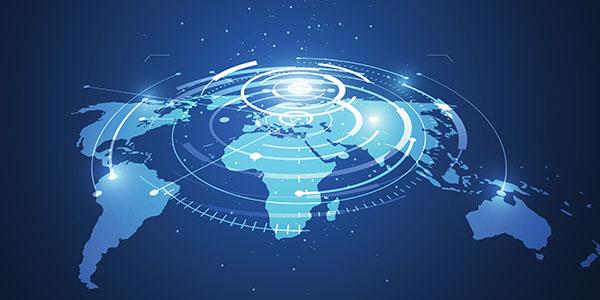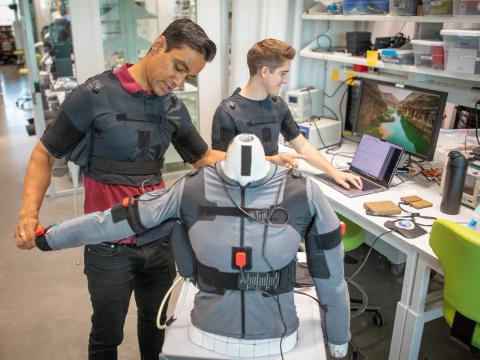The Global Race for Big Data
Data in various forms supports a wide range of national security missions, and whichever country is best able to use that data will have a distinct advantage, according to intelligence agency experts speaking at the virtual 2020 Intelligence and National Security Summit.
While serving on a panel of intelligence agency leaders, Chris Scolese, director, National Reconnaissance Office, emphasized the immense availability and importance of data on a worldwide scale. The panelists were asked to predict future disruptors, and Scolese cited recent breakthroughs in commercial imagery, electronics and radar detection as examples of the kinds of technology provided by governments and industry that supply ever greater amounts of data. “Basically, the whole Earth is being covered almost all the time now when you look at the combination of what’s out there,” he said. Technology is allowing us to do some things we didn’t think of before.”
But technology and the data it provides benefit our adversaries as well. “It’s not only available to us. It’s available to others, particularly the commercial and the international,” Scolese noted.
Chris Scolese, director, @NatReconOfc, says his team "delivered 100% of what we were asked to deliver" during the COVID crisis.#IntelSummit20 #AFCEA #INSA pic.twitter.com/XdOqmuFrgl
— George Seffers (@gseffers) September 16, 2020
He cited artificial intelligence and machine learning as two of the technologies needed to help turn the mountains of data into manageable molehills. “We have to use that technology to really help us. We have to be smarter. One of the things that will allow us to do that is artificial intelligence and machine learning,” Scolese said. “We need machines that can go off and filter through all of that data and make sense of it so that the analyst and the warfighter don’t have to sit there and go through reams and reams of data.”
Sue Gordon, former principal deputy director of national intelligence and current senior intelligence advisor for the Intelligence National Security Alliance (INSA), asked, “Do you think it’s a race? Do you think the person that can actually make use of all the data that are available in a significant way will be the disruption itself?”
The answer: “Absolutely.”
Lt. Gen Bob Ashley, USA, director, Defense Intelligence Agency, said that for his agency, big data is all about understanding what’s taking place globally. The ability to harness data “in a meaningful way” prevents analysts and others from being “encumbered with that information, so that they start having insights presented to them, so they can make decisions and work at a much, much rapider pace with larger pieces of information.”
Responding to the question about future disruptors, Vice Adm. Bob Sharp, USN, director, National Geospatial-Intelligence Agency, distinguished between evolutionary and revolutionary disruption. Evolutionary disruption includes the transition from countering terrorism to competing against another great power and the emergence or greater recognition for new warfighting domains as examples.
“On the revolutionary side … it’s this revolution in remotely sensed and geolocated data, which is available to everyone. It’s available to us, but it’s also available to our competitors,” Adm. Sharp said. “The revolution in smart machines and artificial intelligence, once again, is a great opportunity for us, but it’s not only our opportunity. That’s the competition space.”
The vice admiral also talked about the importance of geospatial intelligence or “GEOINT assurance,” the need to have confidence in the 1s and 0s used to make decisions. “That revolutionary side is really our challenge and our opportunity and our competition space that’s going to define our investments and how we operate over the next decade,” he added.
Adm. Sharp also talked about the wide range of missions his agency supports. The organization’s priorities are to help the United States “compete and win a potential future competition between great powers and to be the best geospatial intelligence agency in the world,” but he said, “The world always gets a vote as well.”
As examples of the world’s vote, the National Geospatial-Intelligence Agency is prepared to support relief efforts for the pandemic, wildfires and hurricanes. “We are responsible for making sure we provide information on everything that happens in the world. And certainly, the humanitarian assistance, disaster relief is a big mission support area for those who do geospatial intelligence.”
VADM Bob Sharp, USN, @NGA_GEOINT, indicates the agency has its priorities, but "The world always gets a vote." He makes a point that agencies have to continue to respond to worldwide events and support numerous efforts, including fires out west. #IntelSummit20 #AFCEA #INSA
— George Seffers (@gseffers) September 16, 2020
Gen. Paul Nakasone, USA, commander, U.S. Cyber Command and director, National Security Agency, compared the next great disruptor—influence operations—to the pandemic, making the case that both have a “low barrier to entry” and can spread easily.
“Influence operations, low barrier to entry, below the level of armed conflict. We’ve seen it now in our democratic processes, and I think we’re going to see it in our diplomatic processes. We’re going to see it in warfare. We’re going to see it in sowing distrust in different countries. And it’s all enabled by technology,” Gen. Nakasone said.
Gen. Paul Nakasone, USA, @CYBERCOM_DIRNSA, says one of the lessons learned over the past 6 months is the "need for us to be a resilient force."#IntelSummit20 #AFCEA #INSA
— George Seffers (@gseffers) September 16, 2020
And influence operations, he suggested, will be a challenge for years to come. “The great technology that’s enabling so much of what we’re doing is also that dual-edged sword that malicious cyber actors and others are able to use to create doubt or to be able to question authority or be able to spread messages that are far from true,” Gen. Nakasone stated. “I think influence operations in general will be, for us, one of the things that we’ll be dealing with not just every two or four years, but this is the competitive space that we’re going to be in as intelligence agencies and as our nation.”
Gen. Ashley also noted the need for greater interoperability between systems and the ability to move from one system to another. The Internet, he pointed out, is largely interoperable but the Defense Department is not.
“Part of that challenge is speed of recognition, speed of decision, machine-to-machine interface and information—whether it’s a warfighting machine, whether it’s the technology that lets us understand what’s taking place in the influence sphere. … We’ve got to be able to elegantly move between weapon systems, we’ve got to move between cross-domain solutions, and that’s got to be seamless. That’s got to be seamless as I build a foundational database. That’s got to be seamless as we think about how we have an F-35 talk to a partner nation.”
LTG Bob Ashley, USA, director, @DefenseIntel, Biggest lesson learned over the past 6 months is trust. He puts that in the context of taking care of employees and their families. #IntelSummit20 #AFCEA #INSA
— George Seffers (@gseffers) September 16, 2020
The summit is cosponsored by INSA and AFCEA.





Comments